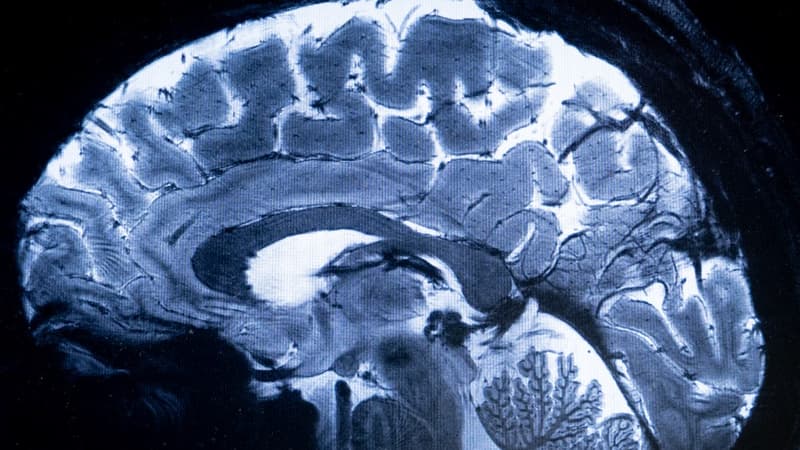Images of the brain of a six -year -old boy of unprecedented precision: researchers at the Atomic Energy Police Station (CEA) Hope, thanks to technological innovation, better understand neurod revelation disorders and child brain diseases.
Installed since 2007 in an CEA Research Center (Neuropin), on the Saclay Plateau (Essonne), the powerful magnetic resonance that produced these shots already offers images of the adult brain. Adapting this technology to use it in children and obtain the green light from the health authorities for this use has taken several years of research and development, researchers explained on Wednesday during a press conference.
For Dr. David Germanaud, a neuropediatrician of the Robert-Debré Institute of the brain and researcher of the child in CEA, this is a “world premiere at this level of images and security guarantee.”
A magnetic resonance 1.5 to 3 times more powerful
Thanks to a better image resolution and the increase in contrasts, this magnetic resonance of seven teslas (measurement unit named in honor of the Serbian physical Nikola Tesla) against 1.5 or 3 for the magnetic resonance found in the hospital dedicated to the investigation, allows to see “the fine details of the brain, vascularization, brain metabolism … and its activity on an individual scale,” he said.
The objective is to better understand neurological development and childhood disease disorders.
“In interested children, very affected in their cognitive functioning and whose cerebellum is too small, we have shown that the most affected cerebellum regions were quite involved in the motor operation,” said Dr. David Germanaud.
Identify certain pathologies before
Therefore, at the level of the cerebral cortex, “there may be small malformations responsible for certain childhood epilepsies: when we detect them early, we can, in some of them, offer surgery, we eliminate the injury and heal epilepsy, and as soon as possible, the better it is”, detailed to Dr. David Germanud.
This advance of the images opens, according to him, “new perspectives for research on neurological development disorders and childhood diseases.”
Another example of application: better understand “another development disease, caused by prenatal alcohol exposure.”
“These children can have physical signs, which is called ‘fetal alcohol syndrome’, but sometimes they do not have them, but whatever alcohol has interrupted brain development,” said the neuropediatrician. “We realized that his cerebellum could be very trained,” he said.
A 3 -year research project
Also “the deciphered development and learning of cognitive capacity can be considered much more on an individual scale,” according to researchers.
The latter will carry out a three -year research project that will study the cerebral and cerebral cortex of one hundred children, divided into three groups of about thirty individuals.
The first will be composed of children with epilepsy, the second of the children suffering from a disorder caused by fetal alcoholization, and the last will be a control group, which allows studying the healthy development of the cerebellum.
Source: BFM TV


